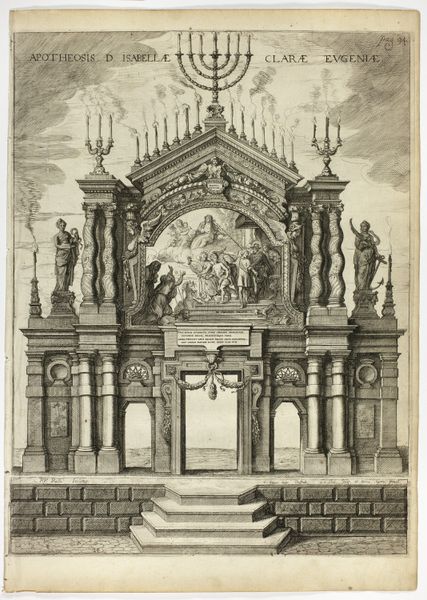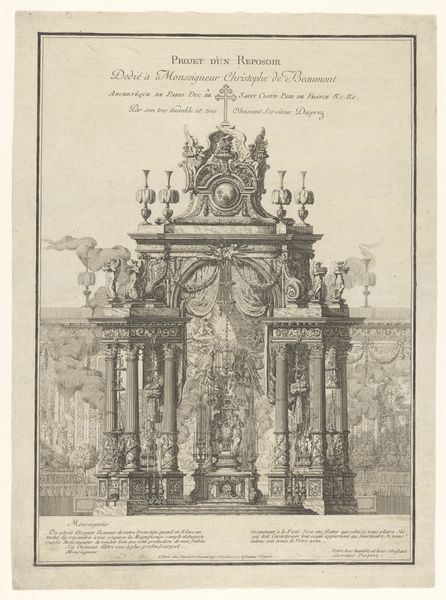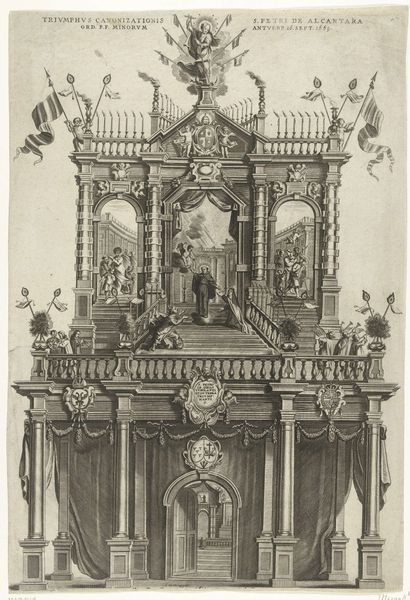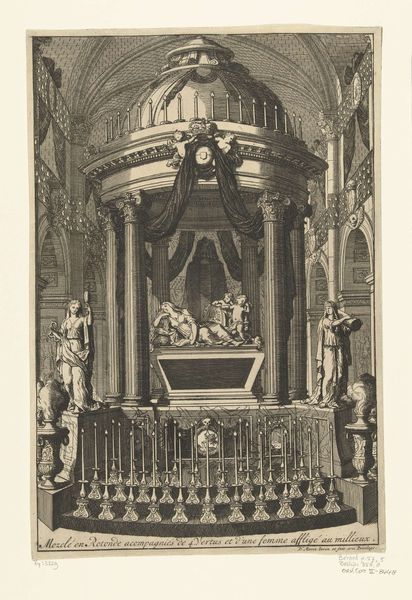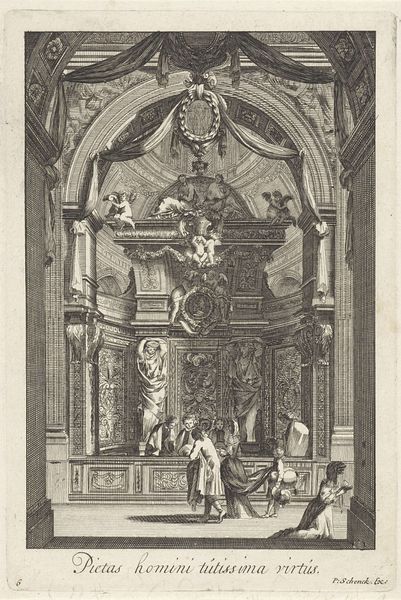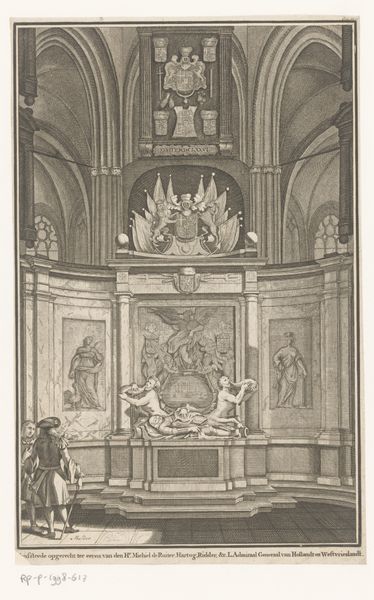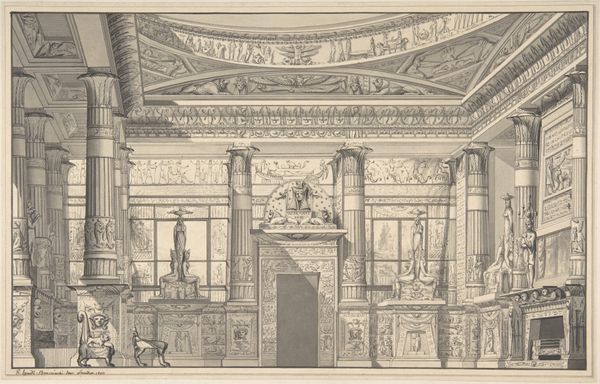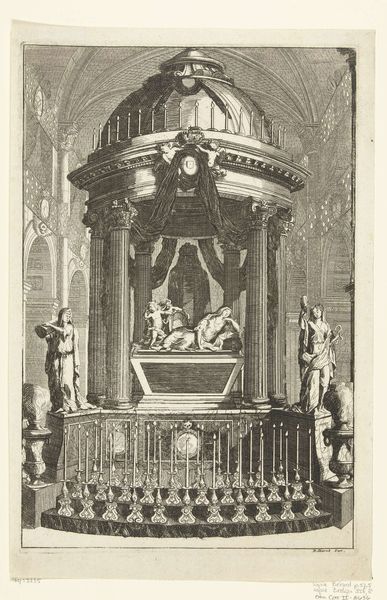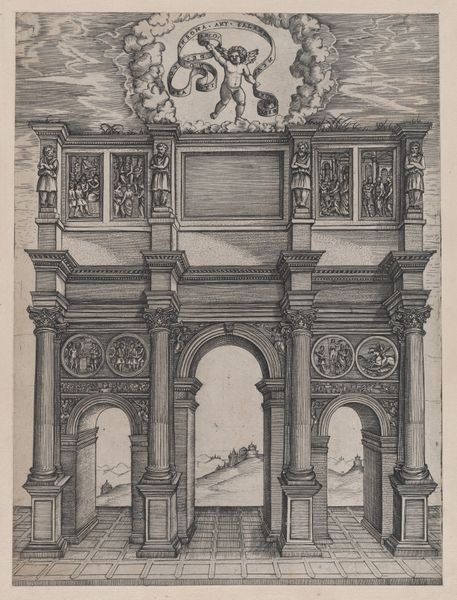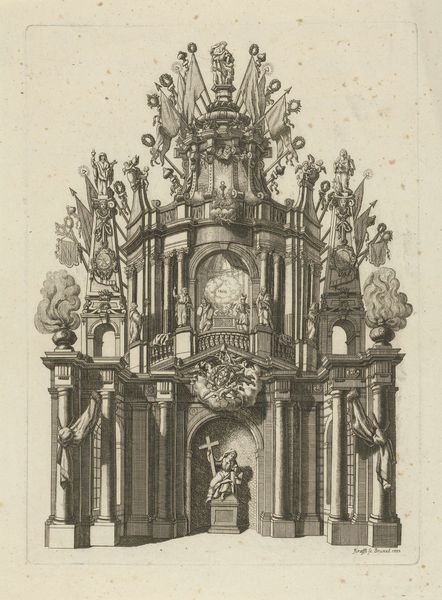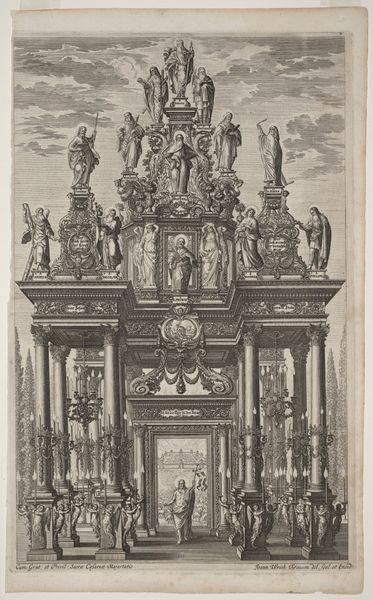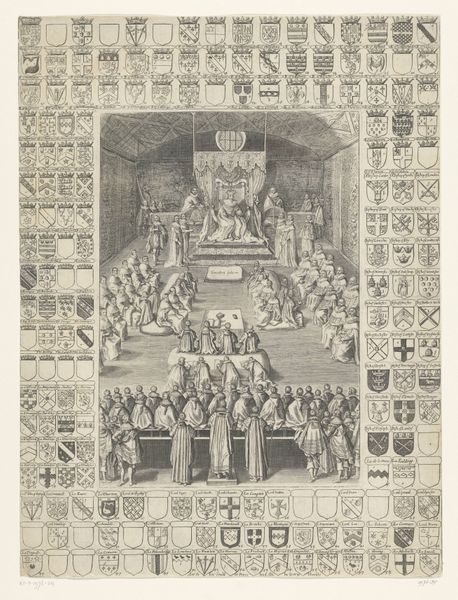
Memorial Decoration for the Interior of a Building to Honor the Deceased Ernst Ludwig, 1725 1702 - 1736
0:00
0:00
Dimensions: 17-15/16 x 13 in. (45.5 x 33 cm)
Copyright: Public Domain
Curator: This print by Alessandro Rossini, titled *Memorial Decoration for the Interior of a Building to Honor the Deceased Ernst Ludwig, 1725*, is rich in symbolism, and provides a window into the culture of remembrance in 18th-century Europe. What strikes you most about this elaborate memorial? Editor: Well, it’s incredibly detailed, almost overwhelming. The skull and crossbones at the bottom definitely give it a *memento mori* vibe, but there's also a lot of pomp and circumstance with the armor and heraldry. It feels contradictory, mourning and celebration at once. What's your take? Curator: You've hit on a crucial tension. The *memento mori* tradition often served the elite by glorifying death to legitimize dynastic power. How do the visual elements reinforce power structures here? Notice the strategic placement of the coat of arms and the rows of figures, seemingly lesser nobles. Consider the context of hereditary power and how such displays might have been used to cement claims to legitimacy. Editor: That’s fascinating. So, the sheer volume of detail and symbols wasn't just about mourning, but also about solidifying a political message about who gets to rule? The artist really seems to be emphasizing the divine right to rule with all the ornamentation and family crests. It’s a bold statement of inherited power, almost insensitive in its grandeur. Curator: Precisely. Think of this memorial as a political act, visually enacting and reinforcing a specific hierarchy. The “insensitive grandeur,” as you put it, wasn't a bug, but a feature. It projected a narrative of uninterrupted authority, a key element in maintaining social order. How does understanding this power dynamic change your interpretation of the artwork? Editor: I guess I initially saw it as simply a memorial piece, focused on mourning, but now I see how completely intertwined that mourning was with projecting power and preserving a certain social structure. It's less about the individual and more about the institution they represented. Curator: Indeed. Rossini's print compels us to see beyond the surface of remembrance, revealing the intricate dance between death, power, and the perpetuation of social control. Editor: Thanks, I now have a better appreciation of the socio-political context that informed its creation and interpretation.
Comments
No comments
Be the first to comment and join the conversation on the ultimate creative platform.
